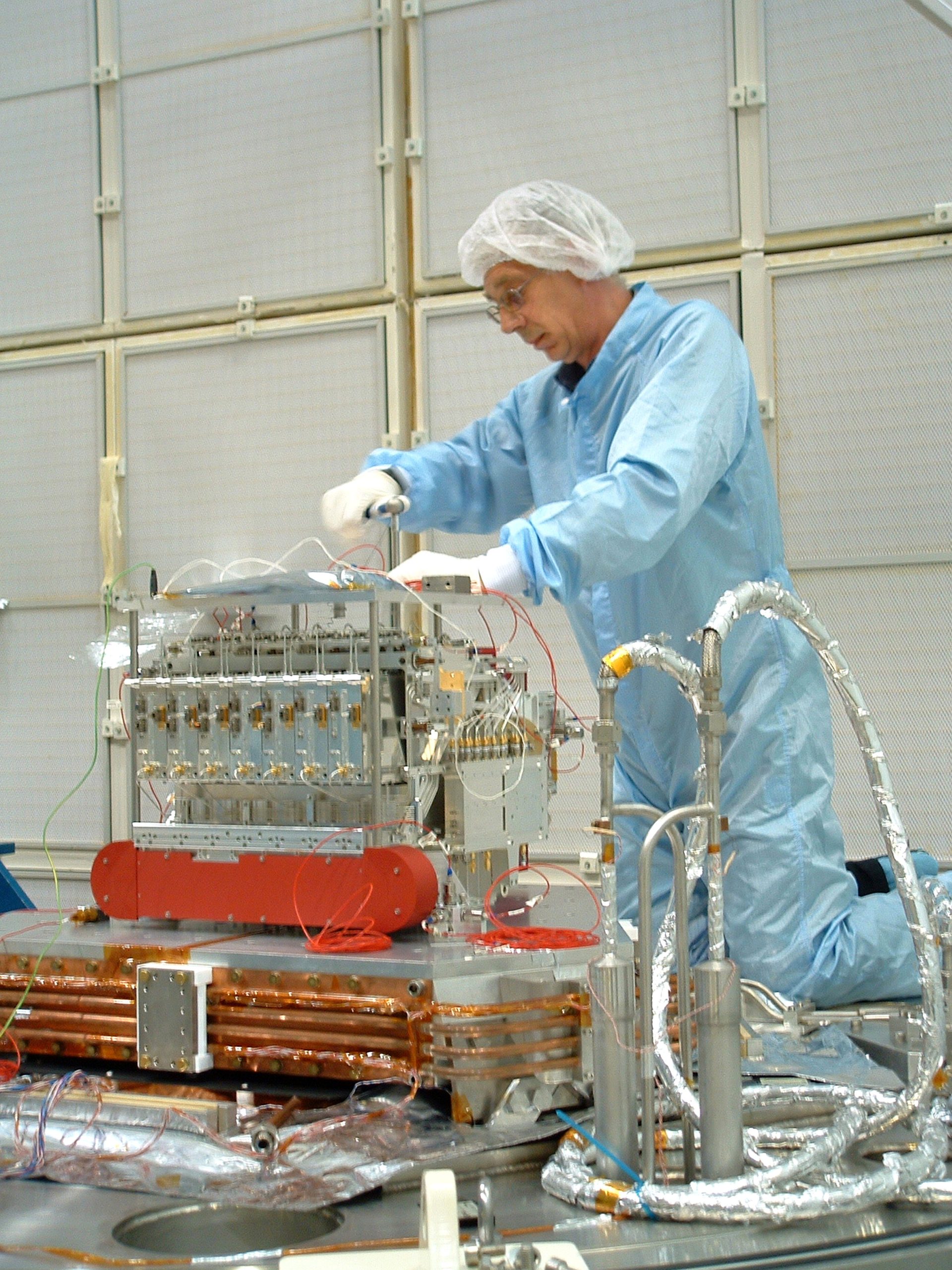In an attempt to take the scientific output of the molecule hunter HIFI to the limit, the HIFI-team has cured a small frequency range (band 3B). Knowing that there was a possibility of losing this band the team had postponed the attempt until the very end of the operations, due in April 2013. HIFI – onboard ESA’s Herschel Space Observatory – has been producing lots of scientific data now for the past three years, after a careful commissioning of the highly complex instrument. With the band 3B observations the team hopes to finalize its survey of molecular complexity in the richest chemical sources in our Milky Way.

Since its launch in May 2009 HIFI has produced a wealth of scientific data, investigating the physics and chemistry of interstellar clouds of gas and dust. The infrared spectrometer has charted with unprecedented accuracy the amount of carbon and water in these gas clouds, which has shed new light on the birth and early development of stars and planets. There was, however, a small frequency range that could not be optimised, because there was a possibility of losing this one band. In 2010 it was, therefore, decided not to touch this band and to wait until the end of the Herschel operations was near.
Principal Investigator Frank Helmich (SRON Netherlands Institute for Space Research) says: “We were not happy to leave it as that, but there were more observations planned, which didn’t use the part of the frequencies that LO chain Band 3B handles. These other observations we gave priority. At the end of the operations however we wanted to revisit these frequencies, with the knowledge that virtually all observations at other frequencies in band 3B had been performed, but with the chemical surveys incomplete.”
After careful preparations scientists and engineers within the HIFI team attempted the optimisation of band 3B in the first week of February 2013. “Instrument Control Center manager Russell Shipman (SRON) says: ” We preferably would have postponed the attempt to an even later date, but we needed the test data almost a month before the renewed science observations in Band 3B could begin.”
The tests have now proven to be successful. Frank Helmich says: “We can now squeeze the last bit of science out of this band. With HIFI’s band 3B we hope to complete the spectra from the chemically richest sources in the Milky Way. We can also recalibrate all the other complete spectral surveys HIFI has done over its lifetime. In this way we will present future archive users with a complete calibrated data set unrivalled now and for the coming decade.”
Herschel will continue observing until its helium runs out between the middle and end of March.
HIFI data are used in many astrophysical papers. Highlights are found at:
/news-mainmenu-588/press-releases-mainmenu-686.html
/hifi/publicaties.html
http://herschel.esac.esa.int/Press_Releases.shtml


